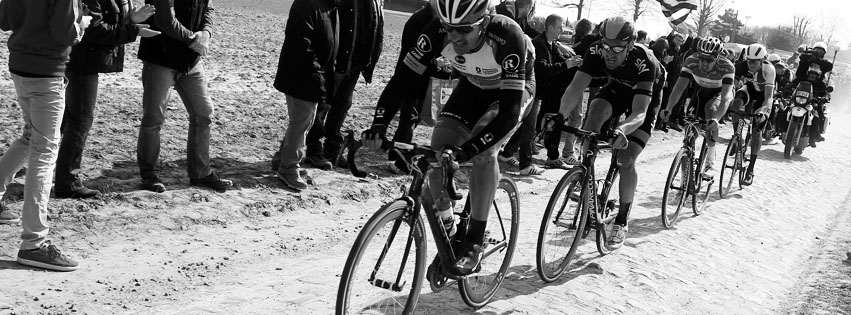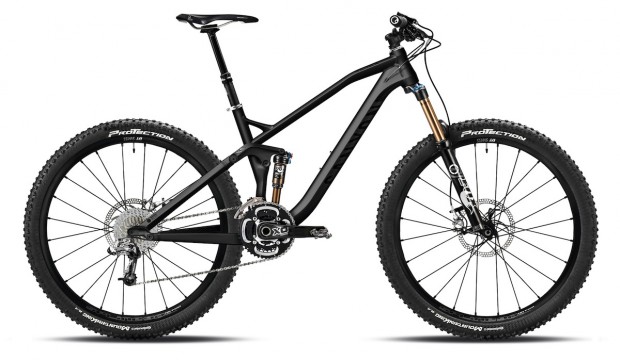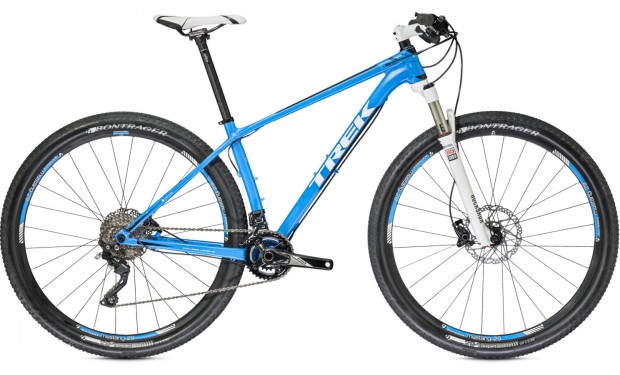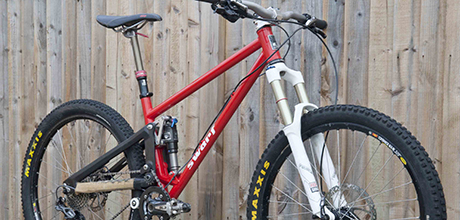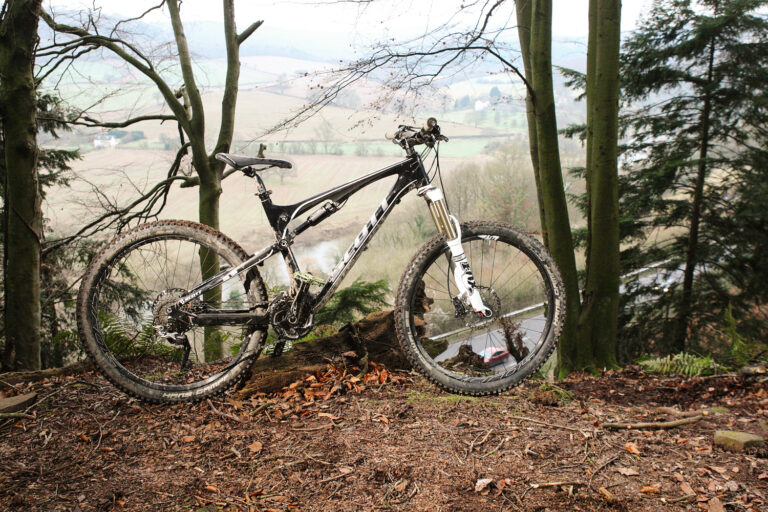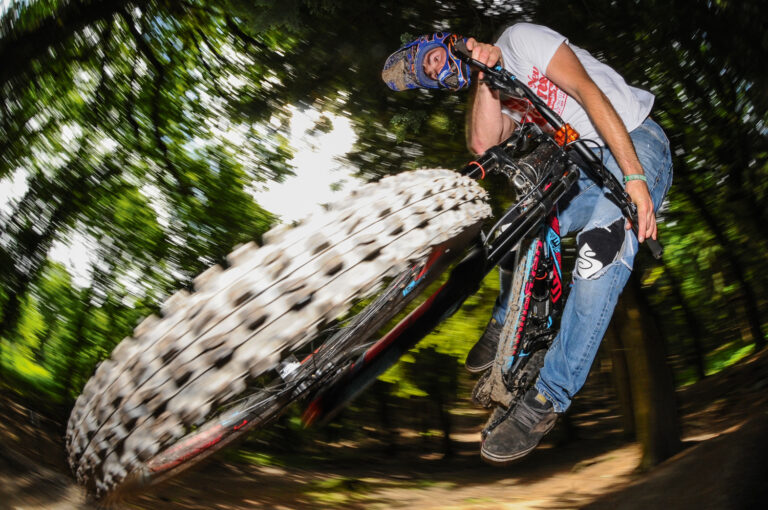 Chassis sorted then but you still didn’t have up to date 27.5” wheels?
Chassis sorted then but you still didn’t have up to date 27.5” wheels?
I first tried 27.5” wheels last summer. In certain rougher sections of trail the momentum it carried was instantly noticeable both by perception and by timing. I’d managed to get hold of a prototype Saracen and I was instantly putting in times on my test trails that were faster than I’d been doing on my 26” Remedy in the wet and mud. Interestingly I was going quicker on dry tyres (Maxxis Ardent and Crossmark) on 27.5” than I was on 26” mud tyres consistently by a few seconds. At that point I was sold on the 27.5” wheels but was really missing my superlight Remedy so I offered them up the frame to check clearance and was delighted to see that they fitted and had enough clearance. The problem I had now was that my BB height was ¾” higher and at full travel the tyre would rub the seat tube at bottom–out. I took some measurements of what shock length would be required to regain my BB height and head angle.
And the chassis changes?On my original 26” set–up I modified the head angle to 66º (67º standard) and the BB height down to 13.4” (14” standard) by shortening the rear shock eye to eye length and running a 34mm Fox fork at 150mm travel which is about 8mm longer than a 32mm Fox fork with the same travel. Now I had to go more extreme and shorten the shock length and stroke further which meant sacrificing some rear wheel travel. My goal was to get the geometry spot on and whatever rear travel I was left with would be OK. It ended up at 131.5mm so I’d sacrificed 18.5mm of rear travel. Up front it was more straightforward as Fox had already produced a 34 specifically for 27.5”, so set at 150mm travel the full package was almost ready, my BB height and head angle were pretty much the same as with 26” wheels.
I do feel that the bike works well with its 131.5mm of travel but 150 would be better. I don’t believe bigger wheels equate to a shorter travel requirement. If I could get 150 travel and the 27.5” wheels it would be faster again.
Talk us through wheel choice?I’ve run Mavic Crossmax SLR for years. I’ve always been light on wheels and never had a problem with them for Enduro style riding, yet a little flexy for downhill. On trail centre style descents the slight flex offers better grip than a more rigid wheel. With no Mavic availability I was led to the Stan’s Crest. By the Stan’s description they should really be too light for what I use them for but felt it was the same with the Crossmax SLR. Hubs were easy, Hope Pro 2 and I went for Sapim CX Rays spokes. These are about the lightest spokes you can get yet are super strong and have a nice flat aero design. Built up they have a familiar feel to the SLR. The front weighs 690g and rear 846g. The full build was a little over 27lbs, job done.
 Feeling versus reality?
Feeling versus reality?
The bike felt awesome instantly, the weight meant it flew uphill yet downhill it was really stable with its long wheelbase (47”) and 27.5” wheels. Through the tighter terrain it also improved the speed as the larger wheels helped carry momentum in places where it’s tricky to get in pedal strokes. Again the stopwatch backed this up, only seconds rather than tens of seconds, but improvements all the same.
What about tyres?There’s a limited choice at the moment but have been happy with the Maxxis Ardent up front and Crossmark on the rear for most conditions. I never liked the Ardent at 26” but it seems to work well on 27.5”. And I always run them tubeless! I’ve also tried a Schwalbe Hans Dampf which worked well for the natural style tracks
How big can you go on the rear?Unfortunately the compromise for me at the moment is that a 2.2 with a low profile like the Crossmark is about the limit for rear clearance. I could probably get something bigger in but the issue would be at bottom out and I’m not losing any more travel.
Front and rear suspension?Rear is a Fox Float CTD factory, medium compression and rebound with 225lb Boost pressure. 185mm eye to eye with 50mm stroke (standard is a DRCV Shock on the Trek). I also reduced the volume internally using the volume reducers to increase the progression slightly. Up front I modified a 27.5” Float 34 CTD 150mm where I’ve increased the progression quite a bit and am currently playing around with some damping changes. As a racer I’ve always viewed suspension as a way of going faster so I set my bike up accordingly. Some guys want comfort and some want a bit of both.
Would you consider a 36 chassis on this bike any longer?That was a benefit of the Remedy for enduro situations. Possibly for certain trails but overall for Gravity Enduro style events, especially in the UK, I don’t think the extra size of the 36 benefits you as it weighs more. I think it comes down to a compromise which will probably bias more towards weight saving or big travel depending on where you’re riding.
Rear, you opted for air over coil?Coil is too heavy! Actually customers often come to us and say they want a coil because they feel better. A few years back I did hours of back–to–back riding on a popular local trail using an Orange 5 on an air shock and coil. The coil always felt great and the air good but I never actually went any quicker on the descents, only marginally slower on the climbs with the extra weight. Now with Kashima coating the difference in feel is so minimal I think coil shocks will disappear altogether in the future. When you have to pedal it weight is so important.
Have you had to alter tune due to different wheel frequencies?No.
Weigh up the pro’s and con’s for us from what you’ve done?Pro’s: feels great everywhere, up and down. Light enough to ride a  50k XC style enduro on, yet can push it on downhill trails. I could maybe build a 160mm bike with a 36 and sticky tyres that would get me down a DH track quicker by say 10–15 seconds as a guess (I’m thinking of a local track I ride), but would probably take me at least 5 minutes longer to ride up. This is my ultimate ‘do everything’ bike. Cons: would like 150mm travel at the rear back and more tyre clearance so I can try some 27.5” mud tyres when someone makes some!
50k XC style enduro on, yet can push it on downhill trails. I could maybe build a 160mm bike with a 36 and sticky tyres that would get me down a DH track quicker by say 10–15 seconds as a guess (I’m thinking of a local track I ride), but would probably take me at least 5 minutes longer to ride up. This is my ultimate ‘do everything’ bike. Cons: would like 150mm travel at the rear back and more tyre clearance so I can try some 27.5” mud tyres when someone makes some!
Simple, weighs nothing, grips everything and feels great. The stopwatch has proved this for both for descending and climbing.

